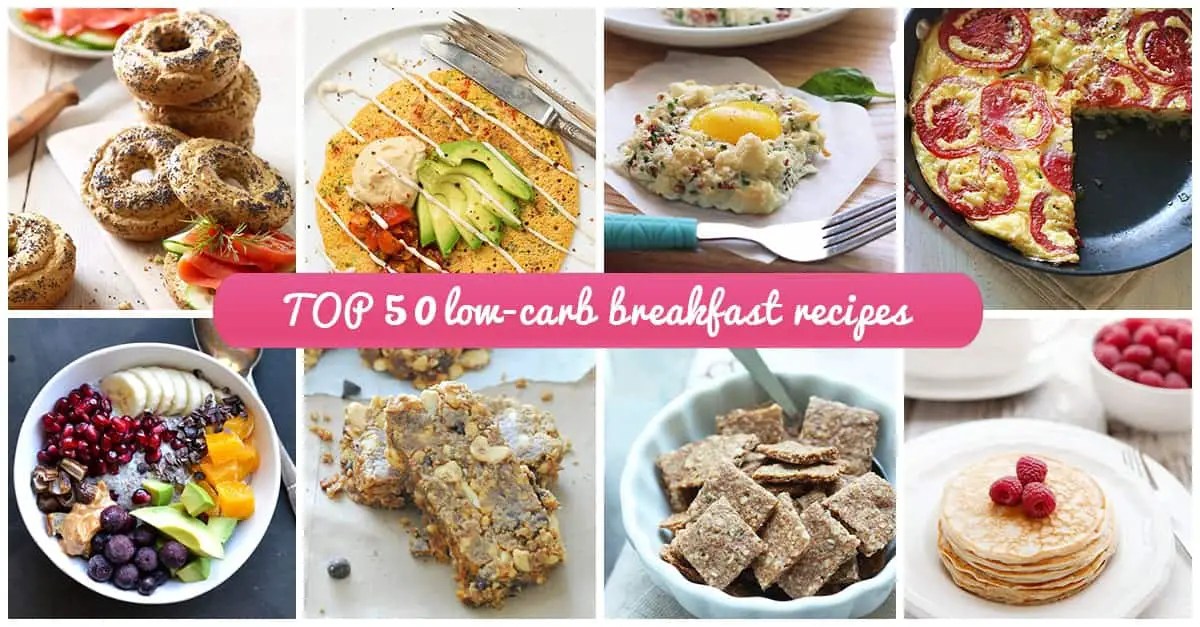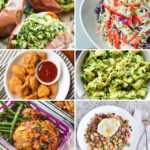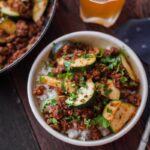Imagine a world where delicious, satisfying dinners don’t sabotage your health goals. This isn’t a fantasy; it’s the reality of embracing low-carb paleo cuisine. Picture vibrant plates brimming with succulent meats, colorful vegetables, and flavorful herbs, all meticulously crafted to nourish your body and keep hunger at bay. This guide unveils the secrets to creating delectable low-carb paleo dinners that not only tantalize your taste buds but also leave you feeling full and energized, paving the way for a healthier, happier you.
We’ll delve into the heart of this culinary journey, exploring a diverse range of recipes, from savory Asian-inspired stir-fries to Mediterranean-style feasts. Learn how to master the art of preparing cauliflower rice in three unique ways, unlocking a world of texture and flavor. Discover the power of meal prepping, simplifying your week while ensuring you consistently enjoy satisfying, nutrient-rich meals. We’ll even tackle common concerns, offering practical strategies to navigate potential challenges and ensure a smooth transition to this rewarding dietary approach.
Meal Prep Strategies

Efficient meal preparation is key to maintaining a low-carb paleo diet. Planning ahead not only saves time during the busy week but also ensures you consistently enjoy delicious and nutritious meals, preventing impulsive unhealthy choices. A well-structured meal prep routine helps you stay on track with your dietary goals and makes healthy eating a sustainable lifestyle.
Weekly Meal Prep Plan: Five Low-Carb Paleo Dinners
A well-organized weekly plan simplifies the process. This sample plan emphasizes versatility and ease of preparation, minimizing cooking time on busy weeknights.
- Monday: Sheet Pan Lemon Herb Chicken and Asparagus. Ingredients: Chicken breasts, asparagus spears, lemon, olive oil, herbs (rosemary, thyme). Preparation: Toss chicken and asparagus with olive oil, lemon juice, and herbs. Roast on a sheet pan at 400°F (200°C) for 20-25 minutes. This method minimizes cleanup and maximizes flavor.
- Tuesday: Ground Beef and Cauliflower Rice Stir-Fry. Ingredients: Ground beef, cauliflower rice, broccoli florets, bell peppers, soy sauce (coconut aminos for stricter paleo), ginger, garlic. Preparation: Sauté beef, then add vegetables and seasonings. Stir in cauliflower rice until heated through. This provides a quick and satisfying meal with lots of vibrant colors and textures.
- Wednesday: Salmon with Roasted Sweet Potatoes (limited quantity). Ingredients: Salmon fillets, sweet potatoes (use sparingly due to higher carb content), olive oil, salt, pepper. Preparation: Roast sweet potatoes and salmon separately at 400°F (200°C) for 15-20 minutes. This is a protein-rich meal with a touch of sweetness, keeping the carb intake manageable.
- Thursday: Chicken Salad Stuffed Avocados. Ingredients: Cooked chicken (leftover from Monday), avocados, mayonnaise (full-fat), celery, onion, salt, pepper. Preparation: Mix chicken with mayonnaise, celery, and onion. Fill avocado halves with the mixture. This is a creamy and refreshing meal, perfect for a lighter evening.
- Friday: Pork Chops with Green Beans and Mushrooms. Ingredients: Pork chops, green beans, mushrooms, olive oil, garlic, salt, pepper. Preparation: Sauté mushrooms and garlic, then roast pork chops and green beans alongside. This is a simple yet satisfying meal showcasing rich flavors and textures.
Shopping List and Time-Saving Techniques
Creating a comprehensive shopping list based on the weekly meal plan prevents unnecessary trips to the store. Batch cooking techniques, like roasting multiple vegetables on one sheet pan, save significant time. Pre-chopping vegetables on the weekend further streamlines weeknight cooking.
Efficient Storage and Reheating of Leftovers
Proper storage is crucial for maintaining the quality and safety of leftovers. Use airtight containers to prevent spoilage and maintain freshness. Reheating methods should minimize moisture loss and preserve flavor. For instance, reheating in a microwave may dry out some dishes, while gentle reheating in a pan or oven preserves moisture and texture better. Consider the specific dish and choose the appropriate method.
Freezing Portions of Low-Carb Paleo Dinners
Freezing allows for meal prepping larger quantities and enjoying delicious, healthy meals even on the busiest days. Portion your prepared meals into freezer-safe containers, labeling each with the contents and date. Freezing techniques vary depending on the meal; some dishes freeze better than others. For example, soups and stews often freeze well, while creamy dishes may separate upon thawing. Always allow food to cool completely before freezing to prevent ice crystal formation. Proper thawing is also essential to ensure food safety and optimal quality. Thaw frozen meals in the refrigerator overnight for the best results.
Flavor Profiles
Unlocking the vibrant world of low-carb paleo cuisine goes beyond simply restricting carbohydrates. It’s about exploring a diverse range of flavors that tantalize the taste buds and keep you satisfied. By strategically using herbs, spices, and unique ingredient combinations, you can create exciting and fulfilling meals that adhere to your dietary needs. This section delves into three distinct flavor profiles, offering recipe examples and highlighting the crucial role of herbs and spices in achieving culinary excellence within a low-carb paleo framework.
Mediterranean Flavor Profile
The Mediterranean diet, renowned for its health benefits, translates beautifully into a low-carb paleo context. Sun-drenched tomatoes, fragrant herbs, and succulent olives form the backbone of this flavor profile. The emphasis is on fresh, vibrant ingredients that create a light yet satisfying culinary experience.
Lemon Herb Roasted Chicken and Vegetables
Ingredients: 1 whole chicken (approx. 3 lbs), 1 lemon (sliced), 1 tbsp olive oil, 1 tsp dried oregano, 1 tsp dried thyme, ½ tsp garlic powder, salt and pepper to taste, 1 lb broccoli florets, 1 red bell pepper (chopped), 1 zucchini (chopped).
Instructions: Preheat oven to 400°F (200°C). Place chicken in a roasting pan. Stuff lemon slices inside the chicken cavity. Drizzle chicken with olive oil and season generously with oregano, thyme, garlic powder, salt, and pepper. Arrange broccoli, bell pepper, and zucchini around the chicken. Roast for 1 hour and 15 minutes, or until chicken is cooked through and vegetables are tender.
Asian-Inspired Flavor Profile
This profile introduces a captivating blend of sweet, savory, and spicy notes, drawing inspiration from the rich culinary traditions of Asia. Think ginger’s pungent warmth, garlic’s assertive bite, and the subtle sweetness of coconut aminos. The key is to balance these flavors carefully to create a harmonious and exciting dining experience.
Coconut Curry Salmon with Cauliflower Rice
Ingredients: 2 salmon fillets (6 oz each), 1 tbsp coconut oil, 1 tbsp ginger (minced), 2 cloves garlic (minced), 1 tbsp red curry paste, ½ cup coconut aminos, ¼ cup coconut milk, 1 head cauliflower (riced), salt and pepper to taste, chopped cilantro for garnish.
Instructions: Heat coconut oil in a pan over medium heat. Add ginger and garlic and sauté for 1 minute. Stir in curry paste and cook for another minute. Add coconut aminos and coconut milk, bring to a simmer. Place salmon fillets in the sauce and cook for 5-7 minutes per side, or until cooked through. Serve over cauliflower rice and garnish with cilantro.
Mexican Flavor Profile
This vibrant profile bursts with the bold flavors of Mexico, featuring zesty limes, fiery chilies, and aromatic spices. The use of fresh herbs like cilantro and cumin adds depth and complexity, creating a truly authentic experience. Remember to adjust the chili level to your preference.
Spicy Shrimp and Avocado Salad with Lime Dressing
Ingredients: 1 lb shrimp (peeled and deveined), 1 tbsp olive oil, 1 tbsp chili powder, ½ tsp cumin, ¼ tsp cayenne pepper (optional), salt and pepper to taste, 2 avocados (diced), ½ red onion (finely chopped), ½ cup cilantro (chopped), juice of 2 limes.
Instructions: Season shrimp with chili powder, cumin, cayenne pepper (if using), salt, and pepper. Heat olive oil in a pan over medium-high heat. Add shrimp and cook for 2-3 minutes per side, or until pink and cooked through. In a bowl, combine cooked shrimp, avocado, red onion, and cilantro. Whisk together lime juice, salt, and pepper for the dressing. Pour dressing over the salad and toss gently to combine.
Herb and Spice Usage Comparison
The Mediterranean profile leans towards bright, herbaceous flavors, utilizing oregano, thyme, rosemary, and basil to create a sun-kissed aroma. Asian-inspired dishes often incorporate ginger, garlic, lemongrass, and chilies, delivering a dynamic interplay of sweet, savory, and spicy notes. Mexican cuisine, in contrast, embraces bolder spices like chili powder, cumin, and paprika, complemented by fresh cilantro and lime for a zesty finish. Each profile demonstrates the power of herbs and spices to transform simple ingredients into culinary masterpieces.
Unexpected Flavor Combination Recipe
This recipe combines the unexpected sweetness of dates with the savory depth of mushrooms and the earthy notes of rosemary, creating a surprisingly delicious and satisfying low-carb paleo meal.
Rosemary-Roasted Chicken with Date and Mushroom Stuffing
Ingredients: 1 whole chicken (approx. 3 lbs), 1 cup cremini mushrooms (sliced), ½ cup pitted dates (chopped), 2 tbsp olive oil, 2 sprigs fresh rosemary (chopped), 1 tsp garlic powder, salt and pepper to taste.
Instructions: Preheat oven to 400°F (200°C). Combine mushrooms, dates, olive oil, rosemary, garlic powder, salt, and pepper in a bowl. Loosely stuff the mixture into the chicken cavity. Roast for 1 hour and 15 minutes, or until chicken is cooked through.
Embarking on a low-carb paleo diet doesn’t mean sacrificing flavor or fullness. With the right knowledge and a touch of culinary creativity, you can transform your dinner routine into a vibrant celebration of wholesome ingredients and satisfying meals. This guide has equipped you with the tools to craft delicious, protein-packed dinners that leave you feeling satisfied and energized. Remember to experiment with flavors, explore new ingredients, and most importantly, enjoy the process of nourishing your body with the goodness of low-carb paleo cuisine. The journey to a healthier you starts with one delicious, fulfilling dinner at a time.
Common Queries
What are the potential side effects of a low-carb diet, and how can I manage them?
Some individuals may experience initial side effects like fatigue, headaches, or constipation. These are often temporary and can be mitigated by increasing water intake, consuming electrolyte-rich foods (like bone broth), and gradually introducing the diet. Fiber-rich vegetables can help with constipation.
How do I ensure I’m getting enough essential nutrients on a low-carb paleo diet?
Focus on a variety of nutrient-dense foods including organ meats, fatty fish, leafy greens, and colorful vegetables. Consider supplementation if needed, after consulting with a healthcare professional.
Can I still eat fruit on a low-carb paleo diet?
While some low-carb paleo approaches allow for small portions of low-sugar fruits like berries, it’s generally recommended to prioritize non-starchy vegetables due to their lower carbohydrate content.
Are all meats allowed on a low-carb paleo diet?
Generally, yes, but it’s important to choose grass-fed and pasture-raised options whenever possible for optimal nutrient content.


